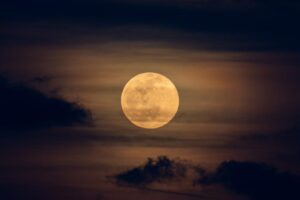March’s full moon was for the history books. This month’s moon was a super moon, a term coined by astrologer Richard Nolle. It describes either a new or full moon that is close to Earth; this usually increases the visibility, brightness, and perceived size of the moon by those on the planet’s surface. March’s full moon goes by many names and is recognized by many cultures across the world.
 Northern Native American tribes refer to the March moon as the Full Crow Moon. Some groups call it the Crust Moon, the Sap Moon, or the Sugar Moon. In Sri Lanka, it’s known as Madin Poya or Medin. The moon holds cultural importance for many cultures. In the Hebrew calendar, the full moon is linked to the observance of Passover. March’s full moon also corresponds with Holi, a Hindu celebration of the conquest of good over evil.
Northern Native American tribes refer to the March moon as the Full Crow Moon. Some groups call it the Crust Moon, the Sap Moon, or the Sugar Moon. In Sri Lanka, it’s known as Madin Poya or Medin. The moon holds cultural importance for many cultures. In the Hebrew calendar, the full moon is linked to the observance of Passover. March’s full moon also corresponds with Holi, a Hindu celebration of the conquest of good over evil.
It is widely known as the Worm Moon thanks to the Native Americans who named it “worm” in reference to a type of beetle larvae that emerges from the thawing bark of trees. In some areas of the world, it’s known as the Worm Moon because of its association with the warming of the ground, the emergence of worms, and the return of spring.